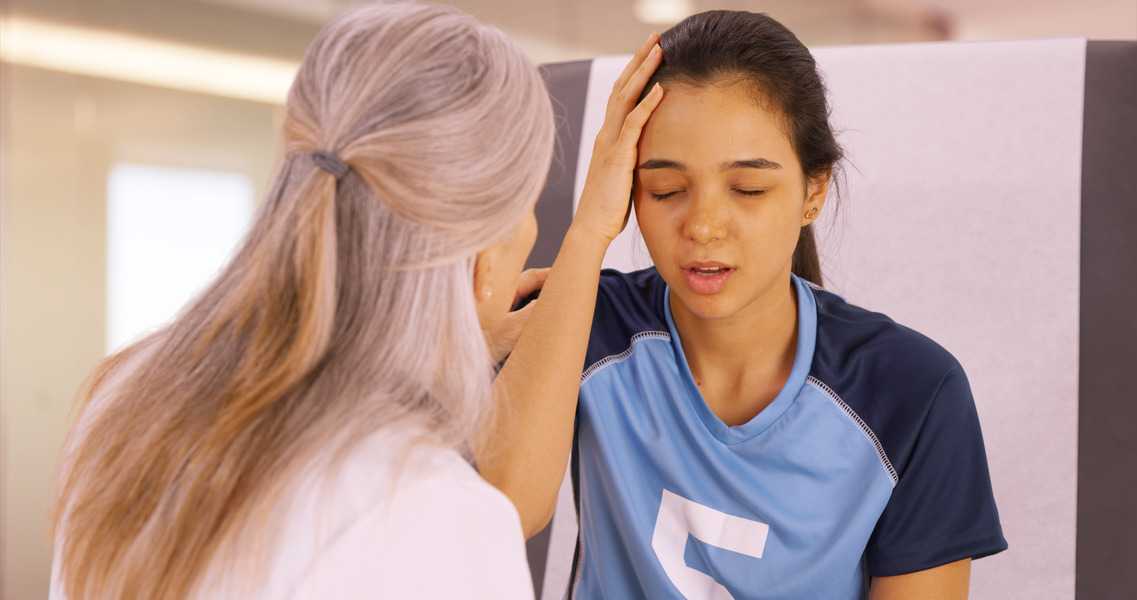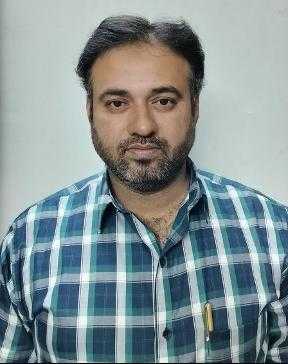
Expert Physiotherapy at Home
Certified physiotherapists visit you at home to provide focused, one-on-one care tailored to your needs. With no travel or waiting rooms, recovery happens in a setting that is comfortable, familiar, and built around your convenience.
Personalised Recovery Programmes
Every treatment plan is designed to suit your condition, goals, and pace. Our physiotherapists follow structured, evolving protocols to ensure consistent progress, with each session aligned to deliver meaningful results.
Trusted Physiotherapists. Real Results.
Our team comprises experienced, background-verified physiotherapists trusted by thousands of families. With a strong focus on safety, reliability, and clinical outcomes, we make recovery at home both effective and reassuring
Patient Testimonials
Portea Physiotherapists for Home Visits
Meet some of our experienced and dedicated healthcare professionals

Dr. Lokesh G
Physiotherapist
Specializations
Experienced in Neurological rehabilitation, Orthopaedic physiotherapy, and Paediatric care
Delivers structured, high-impact treatment plans across neuro, ortho, and paediatrics—ensuring safety, comfort, and measurable recovery at every stage.

Dr. Mohammed Sarwar
Physiotherapist
Specializations
Experienced in Neurological rehabilitation, Adult physiotherapy, and Paediatric care
Combines deep clinical expertise with a compassionate approach, supporting both adults and children through neuro and physical rehabilitation that promotes long-term independence and recovery.

Dr. Nelapati Divya
Physiotherapist
Specializations
Skilled in Orthopaedic rehabilitation, Manual therapy techniques, and Paediatric physiotherapy
Brings a personalised, hands-on approach to healing—combining structural expertise with paediatric sensitivity to restore movement, relieve pain, and improve everyday function.

Dr. Naveen V
Physiotherapist
Specializations
Trained in Pain management, Cardiac and Orthopaedic rehabilitation, Neurological care, and Neural tissue mobilisation
Brings clinical precision and empathy together—designing science-backed recovery protocols for pain relief, nerve mobilisation, and cardio-neuro-ortho rehabilitation across all age groups

Dr. Miloni Savla
Physiotherapist
Specializations
Holds an MPT in Orthopaedics with a focus on Musculoskeletal rehabilitation and strength recovery
Delivers focused, movement-oriented therapy grounded in orthopaedic science—helping patients rebuild strength, restore function, and return to daily life with confidence

introduction: head injury
Head injuries are a significant public health concern, encompassing conditions that range from mild concussions to severe traumatic brain injuries (TBIs). Such injuries can occur due to various incidents, including motor vehicle accidents, falls, sports-related impacts, or violent altercations. Head injuries may lead to profound physical, cognitive, and emotional challenges, depending on their severity and location. Prompt diagnosis and appropriate treatment are crucial to reducing long-term complications and enhancing recovery outcomes.
signs and symptoms of head injury
The symptoms of a head injury vary widely, influenced by factors such as severity, location of impact, and individual response. Mild injuries, such as concussions, often result in temporary confusion, dizziness, headaches, and sensitivity to light or sound. Moderate to severe injuries can manifest as prolonged unconsciousness, memory loss, difficulty concentrating, and personality changes. Physical indicators may include nausea, vomiting, blurred vision, and slurred speech. In extreme cases, symptoms escalate to seizures, loss of coordination, or even coma, necessitating immediate medical intervention to prevent further complications.
causes of head injury
Head injuries arise from traumatic events that cause a sudden, forceful impact on the head, leading to the brain’s movement within the skull. Falls are the leading cause, especially among children and older adults. Motor vehicle accidents represent another common cause, often resulting in significant trauma. Sports-related activities, particularly those involving contact or high velocity, pose considerable risks. Violent incidents such as assaults also contribute to head injuries, as do accidents in hazardous environments. Recognizing these causes is fundamental to prevention and management efforts.
risk factors involving head injury
Several factors elevate the risk of sustaining a head injury. Participation in high-risk activities or contact sports without adequate safety equipment significantly increases vulnerability. Alcohol and drug use impair judgment and motor skills, contributing to accidents. Age is a notable risk factor—children and older adults are more prone to falls, while younger individuals may engage in riskier behaviors. Health conditions affecting balance or coordination, such as Parkinson’s disease, further heighten the risk. Identifying and mitigating these risks is essential to prevent such injuries.
prevention of head injury
Preventing head injuries requires proactive measures at both individual and societal levels. Personal safety practices include wearing helmets during biking, skating, or participating in contact sports, and using seat belts while driving. Creating safe environments at home and work—for example, removing trip hazards and installing grab bars—can reduce falls. Public awareness campaigns about the dangers of driving under the influence and proper sports safety protocols also play a pivotal role. Adopting these preventive strategies can significantly lower the incidence of head injuries.
diagnosis of head injury
Accurate diagnosis is essential for effective treatment of head injuries. Medical professionals perform a comprehensive assessment, including neurological evaluations and imaging studies like CT scans or MRIs, to determine the injury’s extent. Mild cases may require only observation, but more severe injuries often necessitate advanced diagnostic techniques to identify complications such as bleeding, swelling, or skull fractures. Additional tests, including cognitive assessments, may be conducted to evaluate the injury’s impact on brain function. Early and precise diagnosis sets the foundation for a successful recovery.
treatment methods of head injury
The treatment of head injuries depends on their severity and nature. Mild injuries typically involve rest, pain management, and monitoring for any worsening symptoms. Moderate to severe cases may require hospitalization and interventions like surgery to alleviate pressure on the brain or repair fractures. Medications such as diuretics, anti-seizure drugs, or coma-inducing agents may be administered to manage symptoms and prevent complications. Rehabilitation, including physical, occupational, and speech therapies, is integral for recovery, helping individuals regain lost functions and adapt to long-term changes.
role of physiotherapy in head injury
Physiotherapy is a cornerstone in the rehabilitation of individuals recovering from head injuries. Early intervention focuses on preventing complications such as muscle atrophy and joint stiffness while promoting overall mobility and independence. Physiotherapists design individualized treatment plans tailored to each patient’s needs, addressing motor function, balance, and coordination. Techniques such as strength training, balance exercises, and neuro-rehabilitation therapies are commonly employed. Cognitive exercises and sensory re-education may also be incorporated to address deficits caused by the injury. Through consistent physiotherapy, patients can improve their physical and functional capabilities, enhancing their quality of life.
how portea helps in head injury
At Portea, we understand the challenges of living with head injuries. Our home-based physiotherapy services are tailored to the specific needs of each individual, providing personalized care to help them regain mobility and independence in a safe and supportive environment.
We also specialize in providing expert physiotherapy services for post-surgical rehab, arthritis, neuro-rehab, sports injury, orthopaedic physiotherapy, physiotherapy for elderly, respiratory disorders, and more—all delivered conveniently at your home. Our dedicated team ensures you receive the personalized care you need for a smooth and successful recovery.
With Portea, you receive expert paralysis physiotherapy treatment at home, delivered by skilled physiotherapists dedicated to your recovery and well-being. Additionally, we offer a wide range of healthcare solutions, including doctor consultations,medical equipment, nursing care, and dedicated trained attendants ensuring personalized and high-quality care tailored to your needs.
portea’s other physiotherapy services based on medical conditions
faq’s
1.What are the signs of a head injury?
Symptoms include headaches, dizziness, nausea, confusion, and loss of consciousness. Seek medical attention if symptoms worsen.
2.How do you treat a mild head injury?
Rest, ice, and over-the-counter pain relievers may help manage mild head injuries. Monitor symptoms and consult a doctor if needed.
3.Can head injuries be prevented?
Wearing helmets during sports, using seatbelts, and avoiding risky activities can help prevent head injuries.
4.What are the long-term effects of head injury?
Depending on the severity, long-term effects may include memory problems, difficulty concentrating, and emotional changes.
5.When should you seek medical attention for a head injury?
Seek medical help if there is significant pain, loss of consciousness, confusion, or if symptoms worsen over time.
6.Is home physiotherapy effective for head injury recovery?
Yes, home physiotherapy can help improve motor function, balance, and coordination after a head injury.
7.Can a mild head injury lead to serious complications?
Even mild injuries should be monitored, as symptoms can worsen over time, leading to complications like concussion or brain injury.
Doctor Consultation
Nursing
Physiotherapy
Trained Attendant
Elder Care
Mother & Baby Care
Lab Tests
Medical Equipment
Speciality Pharma
Critical Care





